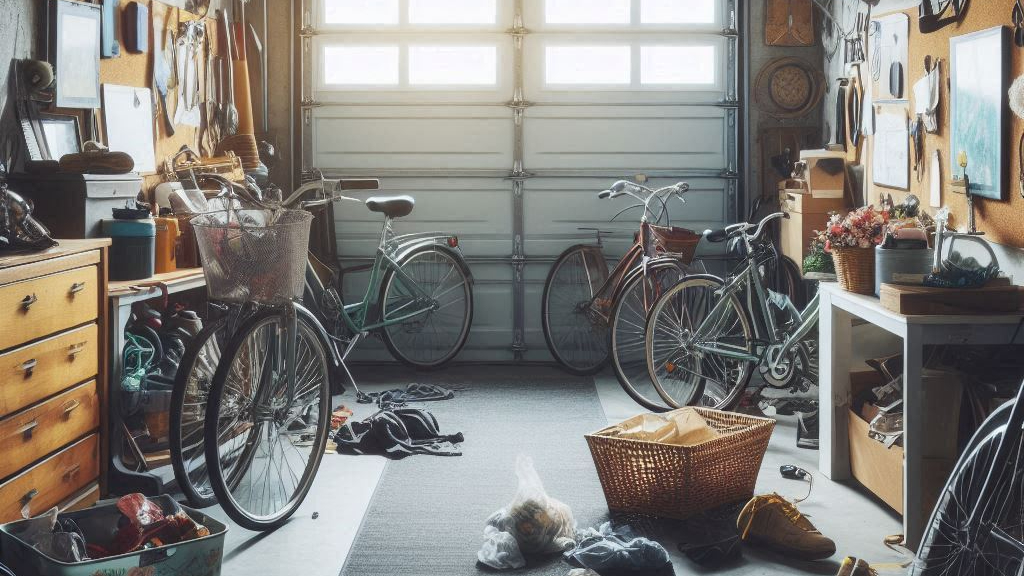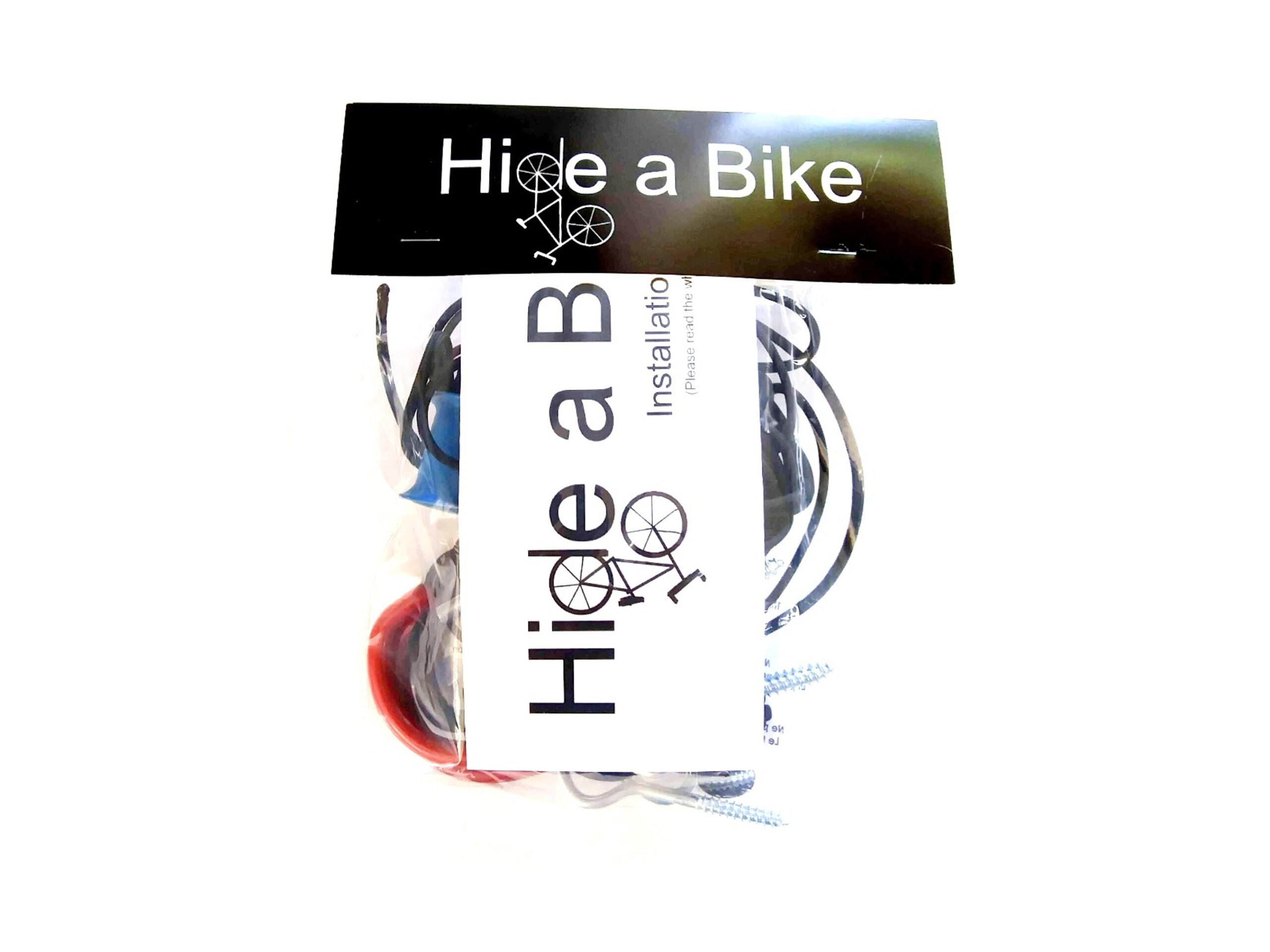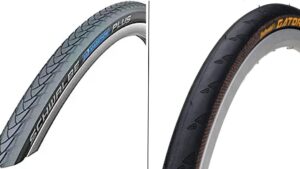How To Store Your Bike Properly To Keep It In Top Condition

Keep your bike protected by learning how to keep it stored properly for years and years of fun and reliable use.
*This article may contain affiliate ads that help to support this site*
Properly storing your bike is an important aspect of bike maintenance that is often overlooked by many cyclists. Many of us spend a considerable amount of time and money on buying the perfect bike, but fail to consider the impact of improper storage on its longevity and performance. By taking a few simple steps to properly store your bike, you can help protect it from damage and ensure that it remains in excellent condition for years to come.
1. Choosing The Best Location For Storing Your Bike
One of the first things to consider when storing your bike is the location. You want to choose a place that is safe, secure, and protected from the elements. There are several different options to consider, including indoor and outdoor storage.
Indoor storage is generally the best option as it provides the most protection for your bike. If you have the space, a dedicated bike room or garage is ideal. Make sure the room is dry, free from dust and debris, and has good ventilation. If you are storing your bike in a garage, make sure to keep it away from any chemicals or tools that could damage it.
If you don’t have indoor space available, outdoor storage can be an option, but it is not ideal. If you must store your bike outside, make sure to choose a location that is sheltered from the elements, such as under a covered porch or in a shed. Be sure to invest in a good quality bike cover to protect your bike from rain, wind, and sun damage. Additionally, make sure to lock your bike securely to prevent theft.
When choosing a location for your bike, consider accessibility as well. You want to be able to easily access your bike whenever you need it. If you are storing your bike in an outdoor location, make sure it is not blocked by other items or hard to get to.
Finally, consider the climate and weather conditions in your area when choosing a storage location. Extreme temperatures and humidity can be damaging to your bike, so choose a location that is protected from these conditions.
2. Preparing Your Bike Storage
Before storing your bike, it’s essential to take a few steps to prepare it properly. Proper preparation can help prevent damage, corrosion, and wear, and ensure that your bike is in good condition when you’re ready to ride again.
The first step is to clean your bike thoroughly. Use a soft brush, a mild soap, and water to remove any dirt, grime, or debris from the frame, wheels, and drivetrain. Pay attention to hard-to-reach areas such as the chain, bottom bracket, and cassette. Once you’ve cleaned your bike, dry it off completely with a soft towel or rag.
After cleaning, lubricate your bike’s moving parts, such as the chain, derailleur, and cables. Apply a good quality lubricant to these parts to protect them from rust and corrosion during storage. Be sure to wipe off any excess lubricant to prevent it from attracting dirt and grime.
Next, adjust your bike’s brakes and gears to make sure they are working correctly. Tighten any loose bolts, and check that all components are properly tightened and adjusted. If you’re not sure how to do this, take your bike to a bike shop or mechanic for a tune-up before storing it.
Finally, consider using a bike stand or rack to support your bike during storage. This will help prevent damage to the wheels and frame and ensure that your bike is stored in the proper position. If you’re storing your bike for an extended period, you may also want to remove the wheels and store them separately to reduce the weight on your bike’s frame.
By taking these steps to prepare your bike for storage, you can help ensure that it’s in good condition when you’re ready to ride again. A little bit of effort now can go a long way in preventing damage and keeping your bike in excellent condition for years to come.
3. Methods To Store Your Bike
There are several different methods of storing your bike, each with its advantages and disadvantages. The method you choose will depend on your available space, budget, and personal preferences.
Wall Mounts: Wall mounts are an excellent option if you have limited floor space. They are easy to install and can be used to store your bike vertically, taking up minimal space. Wall mounts can also be an attractive way to display your bike, showing off its design and components. However, they can be challenging to use if you have a heavy or bulky bike, and they may not be suitable for long-term storage.
Floor Stands: Floor stands are an excellent option if you want to store your bike in a standing position but don’t want to mount it to a wall. They are easy to use, and most models can accommodate a wide range of bike sizes and styles. Floor stands are also portable, making them an excellent option if you need to move your bike around frequently. However, they can take up a considerable amount of floor space, and they may not be suitable for long-term storage.
Ceiling Hoists: Ceiling hoists are an excellent option if you want to store your bike overhead, freeing up valuable floor space. Hoists are great because they tuck your bike flat against the ceiling, giving you as much space as possible. Hide-a-Bike is a perfect choice because it is easy to install and can be used to lift your bike up and out of the way when not in use. Hide-a-Bike can also be adjusted to accommodate different bike sizes and styles. The only drawback of bike hoists is that you have to lift your bike over your head and turn it upside down. This isn’t a big deal if your bike is lightweight, but it can be challenging if you have a heavy or bulky bike.
Bike Shelters: Bike shelters are an excellent option if you need to store your bike outside. They are designed to protect your bike from the elements, and most models come with a locking mechanism to prevent theft. Bike shelters are also portable, making them an excellent option if you need to move your bike around frequently. However, they can be expensive, and they may not be suitable for people who live in areas with extreme weather conditions.
Bike Covers: Bike covers are an excellent option if you need to store your bike outside but don’t have a shelter or garage. They are designed to protect your bike from the elements and can be used to cover your bike when it’s not in use. Bike covers are also portable and can be used to protect your bike when transporting it on a car rack. However, they may not provide as much protection as a shelter, and they can be challenging to use if you have a bulky or heavy bike.
By considering the pros and cons of each method, you can choose the best option for your needs and ensure that your bike is stored safely and securely.

Hide A Bike Kit
Is your garage starting to become a mess? Save space by storing your bikes flat against the ceiling.
4. Extra Tips For Long-term Storage
If you’re storing your bike for an extended period, such as over the winter, there are some additional steps you can take to ensure that it stays in good condition.
Store Your Bike in a Dry, Cool Place: Long-term storage can cause damage to your bike, especially if it’s exposed to moisture or extreme temperatures. To prevent rust, corrosion, and other types of damage, store your bike in a dry, cool place. If possible, store it in a room with a stable temperature and low humidity.
Remove the Battery: If your bike has an electric motor, it’s a good idea to remove the battery before storing it for an extended period. This will prevent the battery from draining and potentially causing damage to the motor or electrical system. Store the battery in a cool, dry place and charge it periodically to maintain its health.
Inflate the Tires: Use a bike pump to inflate your bike’s tires to the recommended pressure before storing it. This will prevent the tires from developing flat spots and ensure that they are in good condition when you’re ready to ride again.
Use a Bike Cover: If you’re storing your bike outside or in an area with a lot of dust or debris, consider using a bike cover or bike shelter. A cover/shelter will protect your bike from the elements and prevent dust, dirt, and other debris from settling on the frame, wheels, and components.
Check Your Bike Regularly: Even if you’re not riding your bike, it’s a good idea to check it periodically to make sure it’s in good condition. Check the tire pressure, inspect the frame and components for damage, and make sure the chain and other moving parts are properly lubricated. This will ensure that your bike is ready to ride when you’re ready to get back on it.
By following these tips, you can ensure that your bike stays in good condition during long-term storage. With a little bit of effort, you can enjoy riding your bike for years to come.

Hide-A-Bike Installation Guide
If you want to put together a Hide-A-Bike kit for yourself, just download these easy to follow, step-by-step directions, complete with a full hardware and parts list.
Conclusion
Storing your bike properly is essential for maintaining its condition and ensuring that it’s ready to ride when you are. By choosing the right location, preparing your bike for storage, using the right storage method, and following these tips for long-term storage, you can keep your bike in top condition for years to come. Whether you’re storing your bike for a few days or a few months, taking the time to store it properly will help prevent damage and ensure that it’s ready to hit the road when you are. So, take care of your bike and enjoy the ride!
Share This Article With A Friend
Did You Read This Whole Article?

You deserve a gift! Enter your email to receive a FREE copy of the Hide-A-Bike Installation Guide! And once a month we will send you a newsletter with the best deals on the internet for bicycle gear and accessories.
About Hide A Bike

Save space by keeping your bike flat against the ceiling with the original easy and convenient bicycle storage solution.
Thank You For Visiting!

You deserve a gift! Enter your email to receive a FREE copy of the Hide-A-Bike Installation guide. And once a month we will send you a newsletter with links to our best finds on bicycle gear and accessories.
Share This Article:
Most Popular Articles:
Article Categories:
Related Articles:

How To Clean Your Bicycle Properly

How To Clean And Lubricate Your Bike Chain






